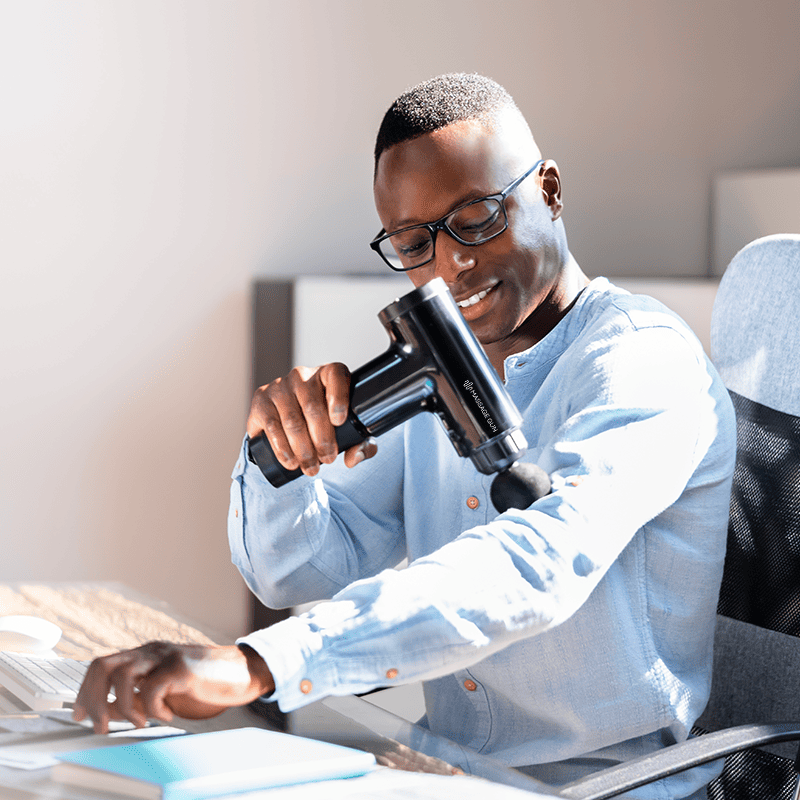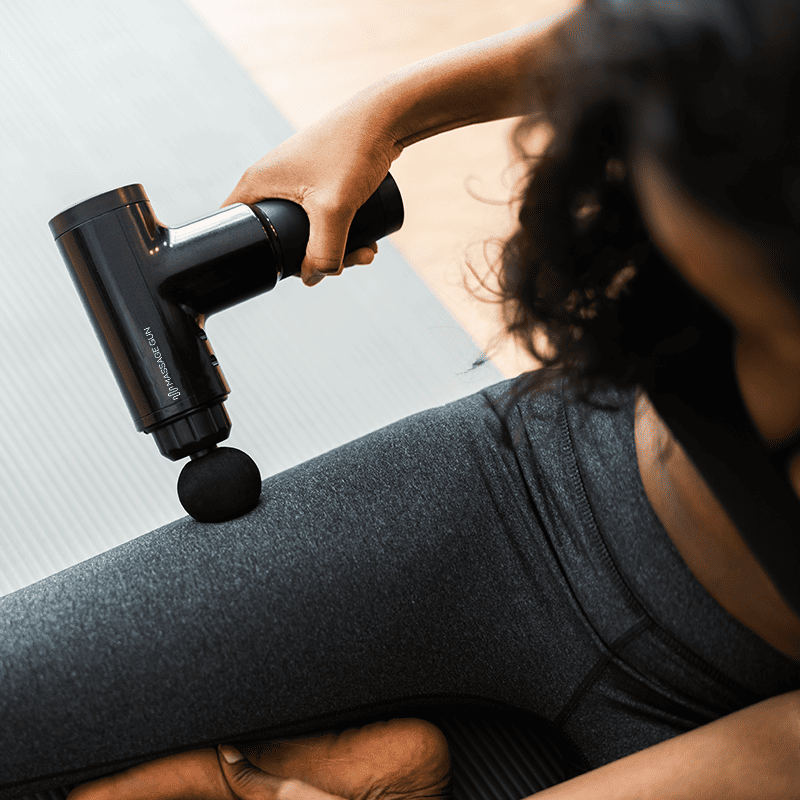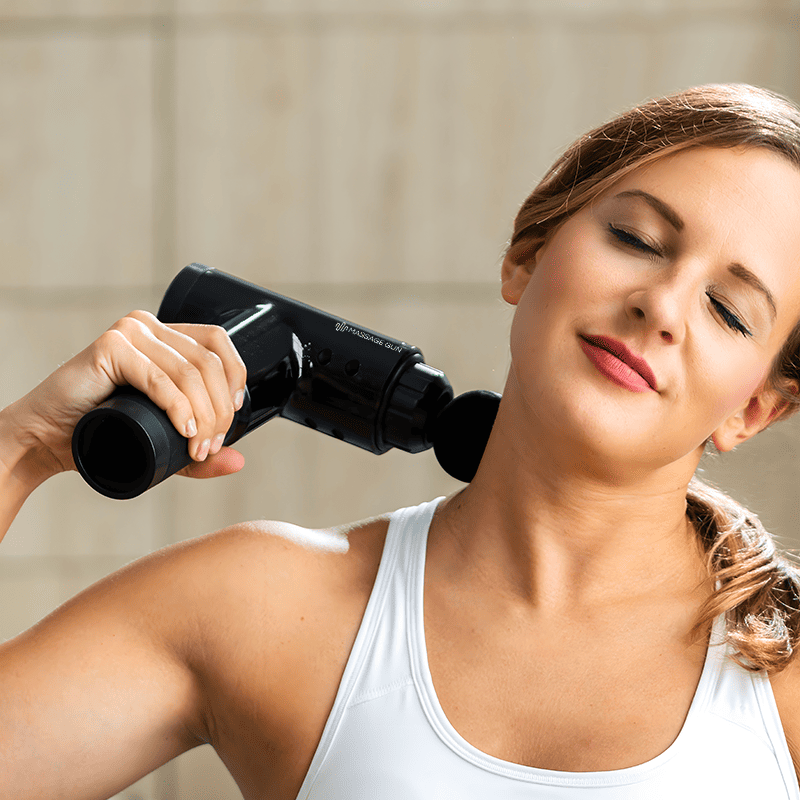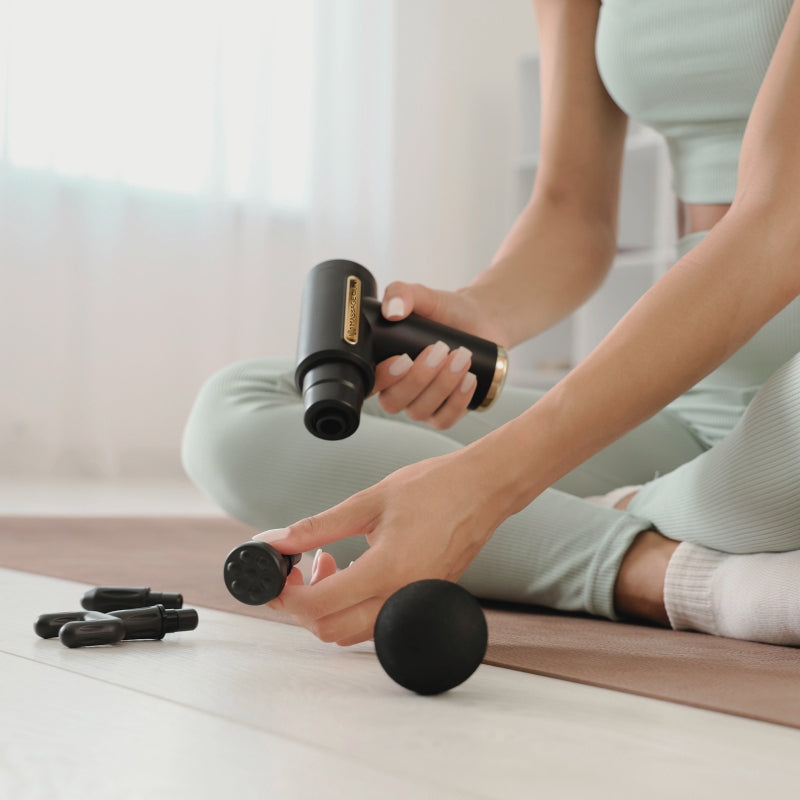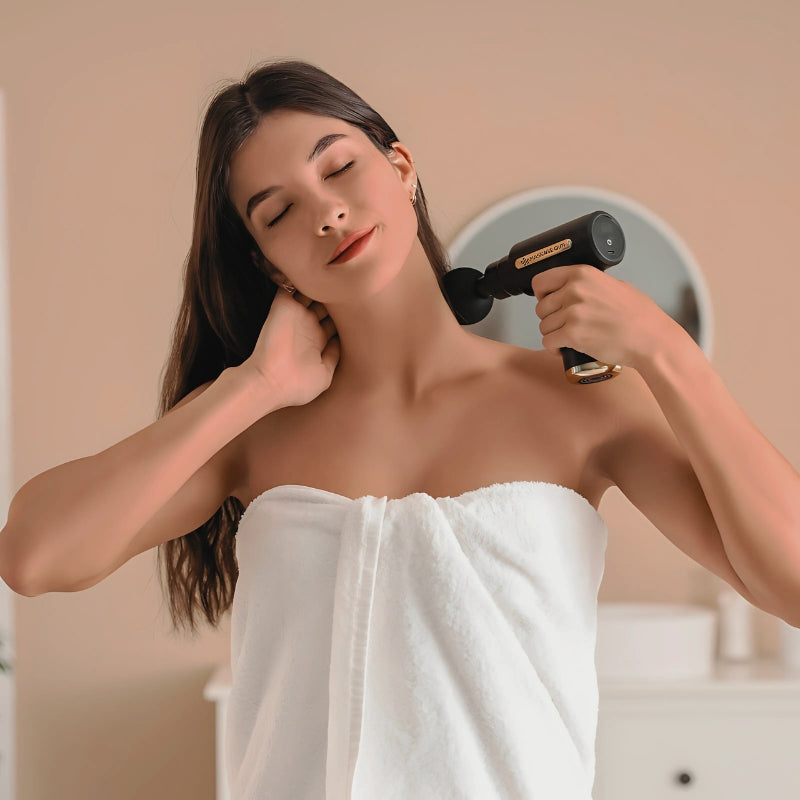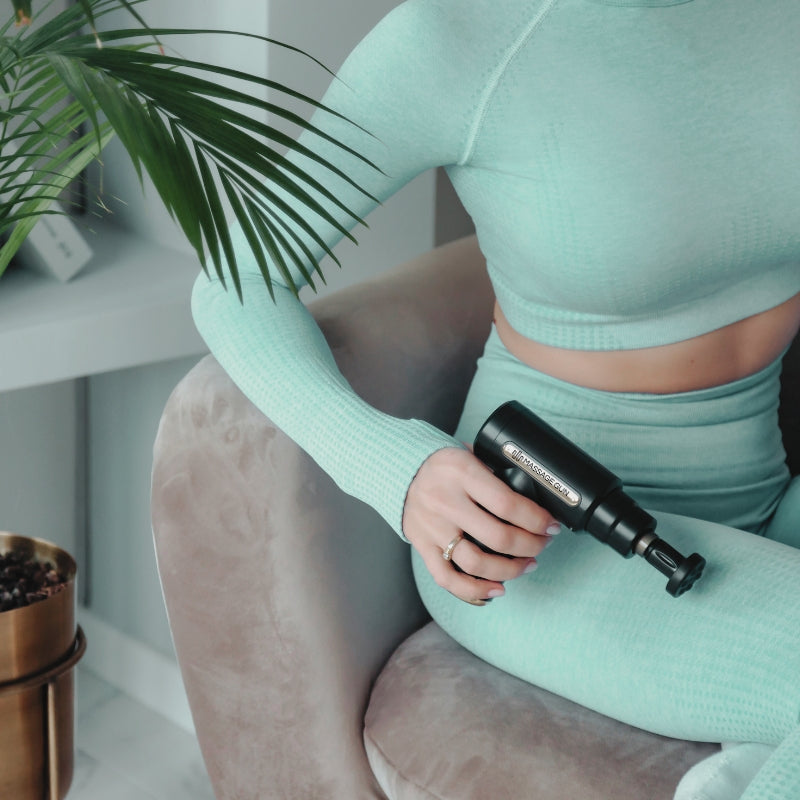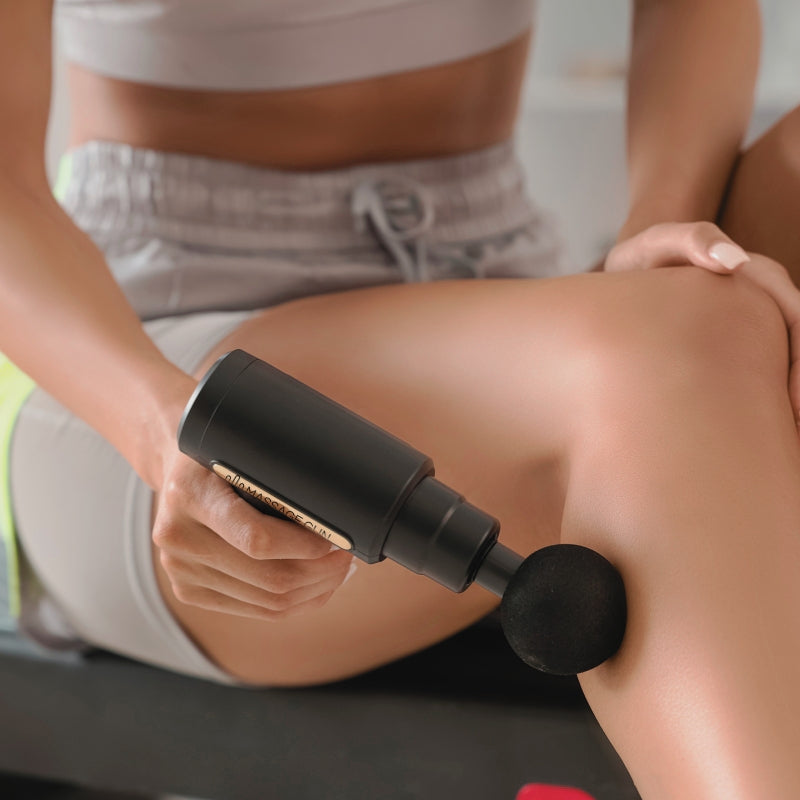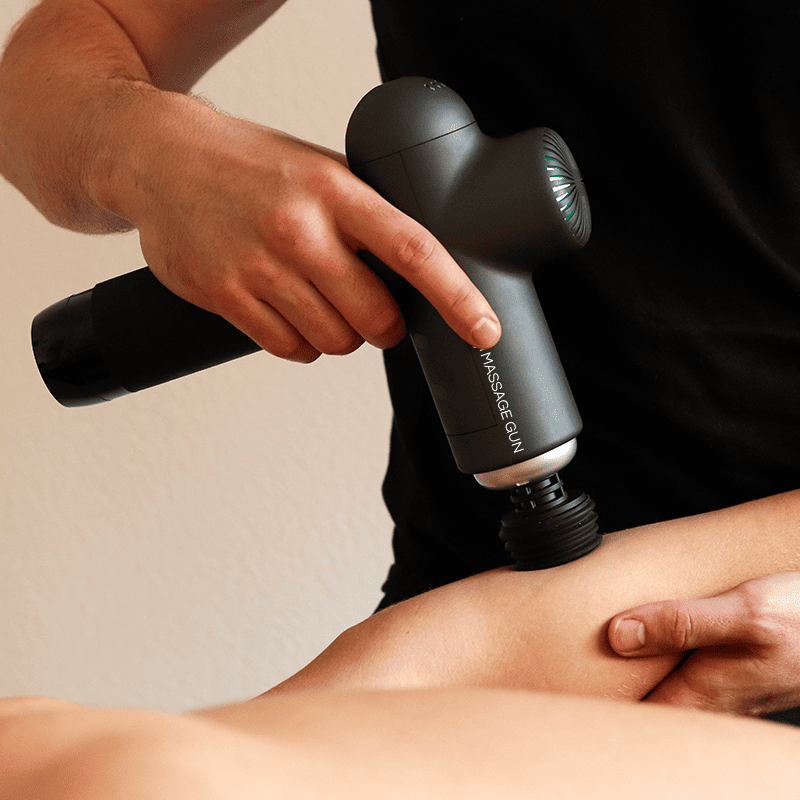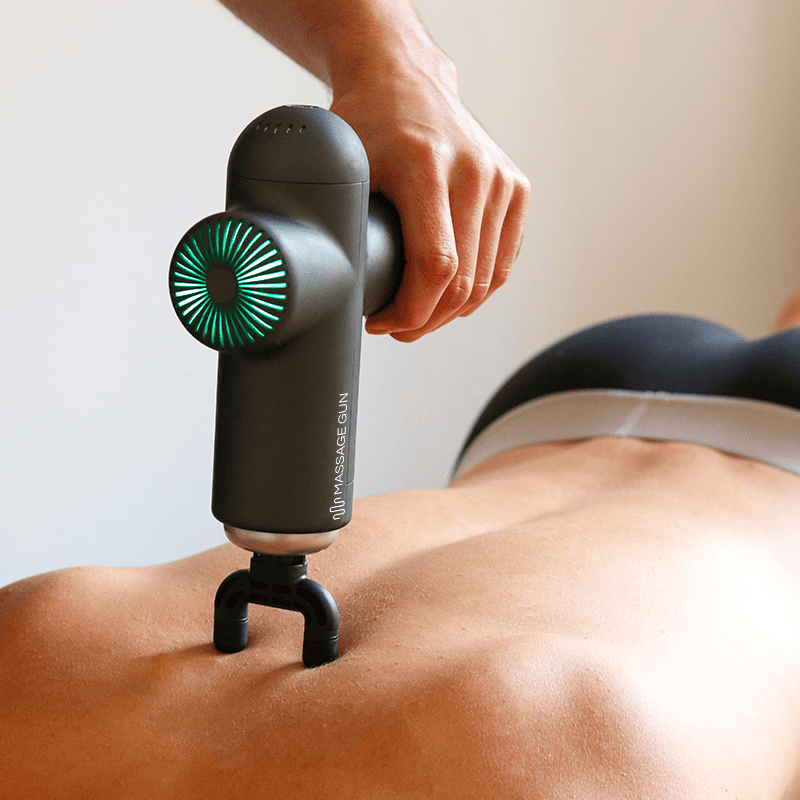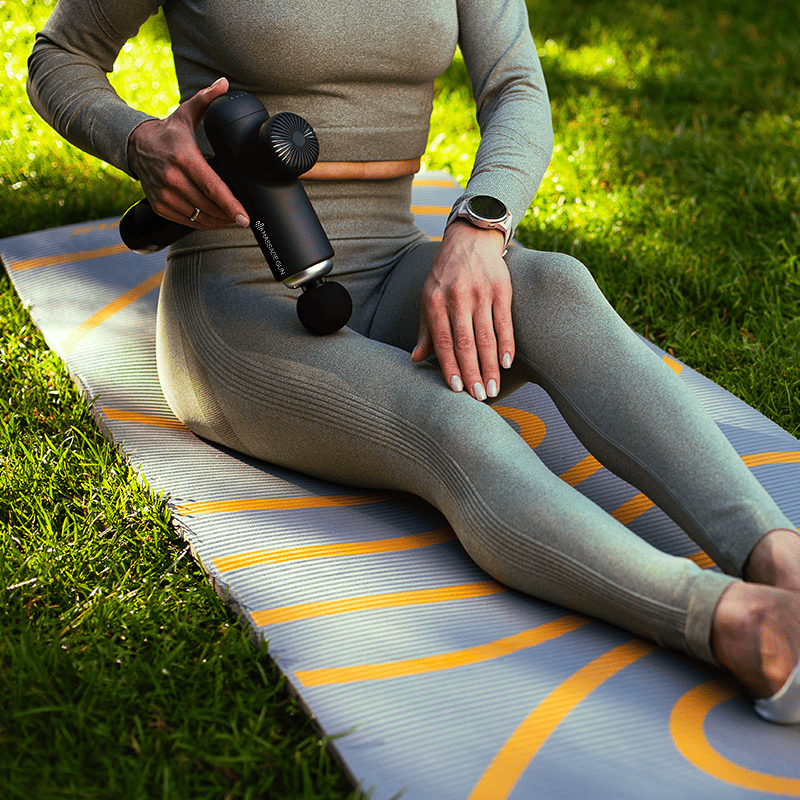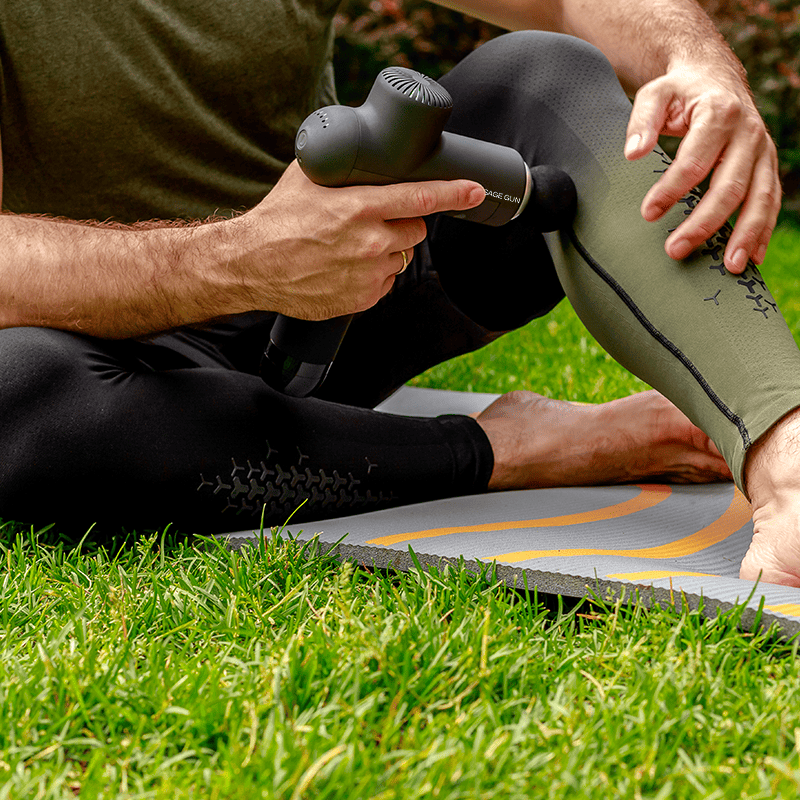Many people report an itchy feeling after using a massage gun, and while it may be uncomfortable, it’s usually a common and harmless reaction. The itching sensation is often due to increased blood flow, vibration, or even the release of histamine from cells.
In some cases, the vibrating massage gun can overstimulate nerves, triggering an itchy or tingling feeling. This reaction might be temporary, but understanding what’s happening in your body can help you manage the itching more effectively.
Causes of itching after using a vibrating massage gun

Increased blood flow and vasodilation
One of the main reasons massage guns can make your skin itch is because of increased vasodilation. The percussion massage gun increases blood flow by expanding the blood vessels, including capillaries and arteries, which enhances circulation. This reaction can stimulate nerve endings and cause an itchy sensation.
Nitric oxide released during this process helps the blood vessels expand, improving circulation but sometimes leading to itchiness. While this increased flow is beneficial for muscle recovery and reducing muscle soreness, it can cause discomfort for individuals with sensitive skin or those new to percussive therapy.
Histamine release and vibratory urticaria
For some people, the itchiness after using a massage gun is caused by a rare condition called vibratory urticaria. This condition occurs when vibrations trigger the release of histamine from mast cells in the skin, leading to hives, swelling, and an intense itching sensation.
Physical urticaria, which can also be triggered by pressure on the skin or other vibration therapy, may cause similar symptoms. The reaction is typically temporary, but for those who experience it regularly, the itchiness can persist during and after each session.
Skin irritation from friction
Friction from the massage device can cause skin irritation, especially if the massage gun is used without protective clothes or directly on dry skin. Wearing tight clothing or applying too much pressure can lead to increased friction, causing small abrasions and itching.
To avoid this, it’s important to reduce the pressure and start with the lowest vibration setting to minimize irritation. Additionally, applying massage oil or lotion before your session can help reduce friction and make the massage therapy more comfortable.
Exploring vibratory urticaria and genetic factors

Vibratory urticaria is a genetically predisposed condition in which vibrations cause the body to release histamine, leading to itchiness, redness, and swelling. When the vibration from the machine stimulates the skin, it triggers mast cells to release histamine, causing an allergic-like response.
This condition is rare, but it’s something to consider if you experience itchy skin every time you use a massage gun. For individuals with vibratory urticaria, treatment options may include taking antihistamines before engaging in activities that involve vibration, such as using a sports massager or massage chair.
Is it normal for your skin to itch after using a massage gun?

Yes, it’s fairly normal to experience an itchy sensation after using a massage gun. The combination of increased blood flow, skin stimulation, and friction can result in a mild itching sensation. People with sensitive skin or conditions like physical urticaria may be more prone to this reaction.
If the itch becomes too intense or leads to hives or swelling, it could be a sign of an allergic reaction or contact dermatitis. It's always best to consult a physician or massage therapist if the itching persists for an extended period.
How to treat itchy skin after using a massage gun?

Lower the speed or intensity
One of the most effective ways to manage itchy skin after using a massage gun is to reduce the speed or intensity of the device. Increasing the intensity too quickly can overstimulate the nerves, leading to an uncomfortable itching sensation.
By starting on the lowest setting and gradually increasing the speed, you can help your skin adjust to the pressure. This will also reduce the likelihood of nerve damage or irritation.
Moisturize before use
Applying massage oil, lotion, or a moisturizer before using the massage device can significantly reduce skin irritation. Moisturizers help create a protective barrier between the skin and the massage gun, reducing friction and preventing small abrasions that can lead to itchiness.
This is especially important for people with dry skin, as they are more prone to irritation. Be sure to use a product designed for massage therapy that won’t clog pores or cause allergic reactions.
Take antihistamines or consult a doctor for persistent itching
If the itching persists, even after making adjustments, taking an over-the-counter antihistamine can help manage the itchiness caused by histamine release. If your symptoms worsen or develop into a more severe allergic reaction, it’s important to consult a physician for a proper diagnosis and treatment plan.
In some cases, a healthcare provider may recommend specific medications or alternative physical therapy methods that don't trigger an itching reaction.
Massage gun settings and their effect on skin sensitivity

Understanding amplitude and frequency
The settings on your massage gun particularly amplitude and frequency have a direct effect on your skin and nerves. Percussive therapy at high frequencies can overstimulate nerve endings, leading to itching and discomfort.
Starting on a low amplitude and gradually increasing the intensity can help minimize this reaction. The speed and depth of the strokes also affect how your body responds to the massage, so adjusting these factors can reduce skin sensitivity.
Choosing the right head attachments
The massage head attachments you use can make a big difference in reducing itchiness. Ball-shaped attachments are typically gentler and distribute pressure evenly, making them ideal for people with sensitive skin.
Flat or bullet-shaped attachments, which provide more targeted pressure, may cause more friction and therefore more skin irritation. Experimenting with different attachments can help you find the right balance between comfort and effective muscle recovery.
When should you see a doctor about itchy skin from a massage gun?

Signs of an allergic reaction
If you develop hives, redness, or swelling after using a massage gun, it could be a sign of an allergic reaction. This may be due to the massage oil or lotion you used during the session or even the material of the massage gun.
In such cases, stop using the device immediately and consult a physician. Allergic reactions typically cause intense itching and may require treatment with antihistamines or corticosteroids.
Persistent or worsening symptoms
If your itching lasts for several days or worsens, it’s important to seek medical advice. Persistent symptoms could indicate nerve damage, pressure urticaria, or other conditions that require professional care.
Physical therapists and massage therapists can provide recommendations on safe ways to use a massage gun to avoid further complications. In more severe cases, your physician may suggest stopping percussion massage entirely and using alternative therapy methods.
Conclusion

Itchy skin after using a massage gun is usually a temporary side effect that can be managed by making a few adjustments, such as lowering the speed or using massage oil. The itchiness is typically caused by increased blood flow, friction, or a histamine reaction.
If the itching persists or becomes severe, it’s always best to seek medical advice to rule out underlying conditions like vibratory urticaria or contact dermatitis. By understanding the causes of itchiness and adjusting your routine, you can still enjoy the benefits of percussive therapy without discomfort.
Frequently asked questions

1. Why does my skin itch after using a massage gun?
Your skin may itch after using a percussion massager due to several factors, including histamine release from cells triggered by vibrational forces. This can also occur because of an increase in blood flow and body vibration, which stimulates nerve endings in your connective tissues.
The increased blood pressure caused by percussive massage can lead to an itchy sensation as sustained pressure from the device impacts the tissues beneath the skin. In most cases, this itchiness is harmless and should subside within a few minutes after the session.
2. Is it normal to feel itchy after using a massage gun?
Yes, it is fairly common to feel itchy after massage, particularly if you are new to using a percussion massager. The deep tissue stimulation increases vasodilation and lymphatic flow, which can cause a temporary itchy or tingling sensation.
Power tools and vibration machines, such as massage guns, can trigger this response as they improve circulation and activate muscle tissues. It’s a normal reaction and usually goes away shortly after the massage.
3. What causes itching after using a massage gun?
The itching caused by a massage gun can be attributed to several factors, including histamine release from cells, increased blood pressure, and body vibration. As the tissues beneath the skin are stimulated by the percussive massage, this can lead to an increase in blood flow and mild muscle pain.
The stroke and intensity of the massage gun can also affect how the skin and nerves feel during and after the session, resulting in a temporary itch.
4. Can a massage gun cause an allergic reaction?
A massage gun itself is unlikely to cause an allergic reaction, but the products you use during the session, such as massage oils or lotions, may cause itchy hives or a rash. In some cases, histamine release from cells due to the vibrations of the percussion massager can mimic an allergic response.
If you develop itchy hives, it’s best to consult a certified healthcare professional to ensure proper treatment. Avoid using any unknown product during your massage to prevent contact dermatitis.
5. How do I prevent itching after using a massage gun?
To prevent itching after using a massage gun, start by using the device at a lower stroke rate and intensity. This will reduce the likelihood of overstimulating the tissues. You can also improve comfort by moisturizing your skin beforehand and performing stretching exercises to enhance lymphatic flow.
If you have sensitive skin, avoid wearing tight clothing during your session and use a relaxing deep tissue tissue massage technique to minimize friction on the skin.
6. What is vibratory urticaria and how does it relate to massage guns?
Vibratory urticaria is a rare condition that occurs when body vibration triggers the release of histamine from cells, leading to itchy hives, swelling, and sometimes a rash. Using a vibration machine like a percussion massager can cause this condition to flare up, especially in those with a genetic predisposition.
The increase in vasodilation and sustained pressure on the tissues can exacerbate this condition. If you suspect you have vibratory urticaria, consult a healthcare professional for an accurate diagnosis and appropriate treatment plan.
7. Can friction from the massage gun cause skin irritation?
Yes, friction from a massage gun can cause skin irritation, especially when applied with too much pressure or used directly on dry skin. The repeated strokes of the device can cause micro-abrasions, leading to itchiness and discomfort.
To avoid this, moisturize your skin and avoid wearing tight clothing. Using a percussive massage technique with a slower stroke rate can also help reduce irritation during your session.
8. Should I stop using a massage gun if it makes me itchy?
If the itchiness is mild and short, you likely don’t need to stop using the massage gun. Adjusting the rate or using a different head attachment can help reduce tissue irritation.
However, if you experience severe itchy hives, a rash, or other signs of an allergic response, it’s important to stop using the device and seek medical attention. Persistent symptoms could indicate an underlying issue, such as vibratory urticaria or connective tissue sensitivity.
9. Can increased blood flow from a massage gun cause itching?
Yes, the increased blood flow resulting from a massage gun session can cause itching. The vasodilation brought about by the percussive massage increases blood pressure and lymphatic flow, stimulating the nerves and causing the skin to feel itchy.
This reaction is typically harmless and subsides after a few minutes once the tissue settles down. Certified massage therapists recommend using the device at a lower intensity to reduce the itchy sensation.
10. Can using a massage gun on sensitive skin make itching worse?
Yes, if you have sensitive skin, using a massage gun can make itching worse, especially if the device applies too much pressure or is used at a high stroke rate. The vibration machine can overstimulate the nerves and cause further irritation.
To minimize itchiness, use the lowest setting and apply a gentle deep tissue massage. Consider moisturizing the skin before the session to protect it from sustained pressure and friction.




